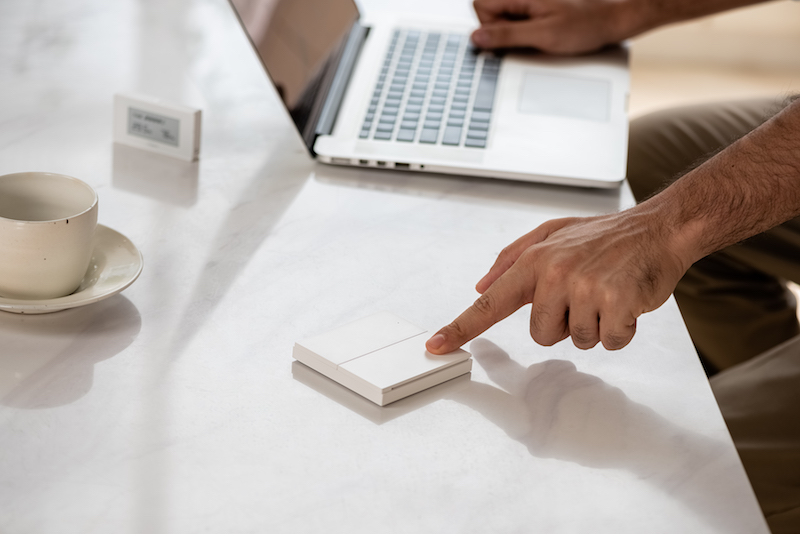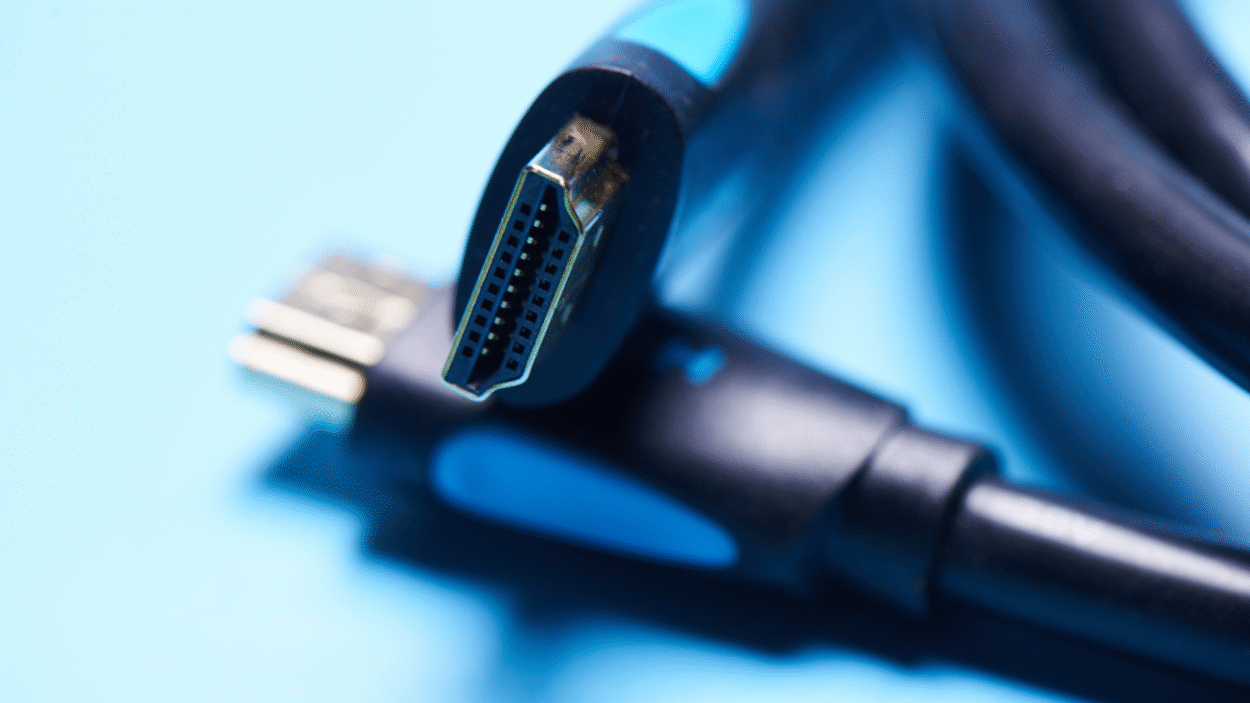IoT device makers have started to release products that support Matter (the newest protocol for IoT wireless communications) and I’ve tried several of them.
The term “smart home protocol” refers to the communication standard or language that different devices in a smart home use to communicate with each other and with the central processor or hub that manages the smart home system.
There are many different smart home protocols available, including Zigbee, Z-Wave, Bluetooth, Wi-Fi, and Thread. Each protocol has its own strengths and weaknesses, and different smart home devices may be designed to use different protocols.
The problem has been that when choosing smart home devices, you’ve had to consider which protocols they use and whether they are compatible with the other devices in your smart home. Some smart home hubs or controllers support multiple protocols, while others only support one or a few.
Having multiple smart home protocols has been a nightmare for consumers because it has made it challenging for a consumer to ensure that all of their smart home devices are compatible and can communicate with each other. If devices use different protocols, they may not be able to “talk” to each other, which means that certain features or automations may not work properly.
For example, if you own a smart lock that uses the Z-Wave protocol, your lock can’t communicate with an Alexa smart speaker. Therefore, you won’t be able to use voice commands to lock or unlock your door.
In addition, having multiple protocols can make it more difficult to set up and manage a smart home system. Consumers may need to purchase additional hardware, such as bridges or hubs, to enable devices that use different protocols to communicate with each other. This can add to the cost and complexity of setting up a smart home.
This situation also has been a nightmare for smart home device manufacturers. They either had to create multiple models of a device that they want to sell with each model supporting different protocols; add to the complexity and cost of a device so it includes support for multiple protocols; or support a public API (applications programming interface) and hope that smart home processor/hub manufacturers or hobbyists, with software development skills, will write drivers so that the devices will work with different smart home ecosystems
Obviously, this situation has not been great for either consumers or manufacturers.
One Protocol to Rule Them All
What has been needed is standardization within the smart home community. If all smart home devices and smart home processors/hubs used the same protocol, then it would greatly simplify things for consumers and lower costs for manufacturers.
Matter (originally called Connected Home over IP or CHIP) is the newest protocol for IoT wireless communications. It promises to be a unifying standard that will allow all IoT devices to work together. If you think that Matter will just be another competing standard that confuses consumers and complicates smart homes, you are probably wrong.
First, and foremost, you have to look at the companies behind Matter. The Matter consortium includes Amazon, Apple, Google, Samsung SmartThings, and many other companies. These companies have recognized that it is in their best interest to have IoT devices that are compatible with all of their platforms. Then they can differentiate themselves among competitors by building the best possible platform, while only having to build IoT devices for a single protocol specification.
Matter is being developed under the umbrella of the Connectivity Standards Alliance (CSA) and will be royalty free, which keeps the price low for IoT devices that use the Matter protocol. In addition, Matter is being developed as an open-source project. The software is available for download on Github and licensed under the Apache open-source license.
The availability of a reference software implementation of Matter should speed up development of Matter based IoT devices by manufacturers. The release of the Matter protocol specification, along with the devices that leverage it, have been delayed several times. However, the wait is finally over.
Apple has included Matter protocol support into their Apple HomeKit platform when using the Apple HomePod (second generation), Apple HomePod Mini, Apple TV 4K WiFi + Ethernet, and the Apple TV 4K.
Google has included Matter protocol support into their Google Home platform when using the Nest Hub (second generation) or the Nest Hub Max.
SmartThings has included Matter protocol support for the Aeotec SmartThings Smart Home Hub, the Samsung SmartThings Station, and the Samsung SmartThings Hub v3.
Amazon has released limited Matter support to many of its Echo and Eero products. More complete support, including support for the Thread protocol, is scheduled for release in 2023.
In addition, IoT device makers have started to release products that support Matter, and I’ve tried several of them using an AppleTV 4K WiFi + Ethernet as a test platform.
Aqara and Matter
Aqara, which was founded in 2016 and entered the U.S. market in 2019, now offers compatibility with the Matter protocol. Their products are available online and through more than 150 retailers on six continents. They have more than seven million world-wide customers.
Aqara has won multiple international design awards. Their products are designed to be easy to install and are compatible with Alexa, Google Assistant, and Apple HomeKit. These products communicate using the Zigbee 3.0 wireless protocol with their M2 Hub, which, in addition to Matter compatibility, offers support for up to 128 Aqara devices, the ability to control devices through IR, an Ethernet RJ-45 port, and a built-in speaker.
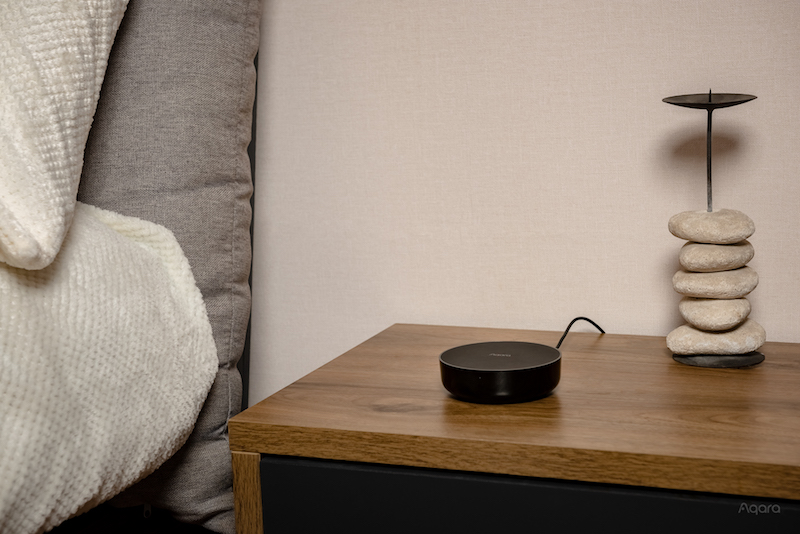
Setting up the M2 Hub and connecting other Aqara devices to it was very easy. After plugging in the hub and installing the Aqara app on a smart phone or tablet, you simply select the “add accessory” option, choose the device you wish to add, choose the hub you wish to bind the device to, and press the button on the side of the device until the built-in LED flashes three times. Once the device has been detected by the hub, you can name it and select the name of the room in your home where the device will be located
Because Aqara is compatible with Apple’s HomeKit platform, any device that is connected to the Aqara Hub is immediately available within the Apple Home app.
To make devices available through the Matter protocol, Matter needs to be enabled on the Aqara Hub. Before this can be done, you need to make sure that the firmware on the hub and all the devices is up to date. This is easily accomplished using the Aqara app.
To enable support for the Matter protocol you:
- Choose “Accessories” from the Aqara app’s main menu
- Select the Hub M2 from the list of accessories displayed
- Press the “…” button in the upper right corner of the app
- Choose “More Settings” from the options displayed
- Select “Bind to Matter” from the list of options
Once this is done, all the Aqara devices that are compatible with Matter will show up a second time in the Apple Home app. They show up one time through the HomeKit compatibility connection and a second time through the Matter connection.
However, the first thing to be aware of is that not all of Aqara’s devices are compatible with Matter because it is an emerging platform that is simply not yet compatible with every IoT device that manufacturers have for sale. The consortium is working to address this issue, but it is going to take time.
A second thing to be aware of is that not all the features a manufacturer builds into a product may be supported by Matter. For example, the Aqara M2 hub includes the ability to act as a security system. It supports different security modes (home, away, night, off) and the ability for sensors connected to the hub to trigger alarms based on the currently selected mode. This ability to select the hub’s security mode is exposed in the Apple Home app when the Aqara Hub is connected through its direct compatibility with Apple HomeKit. However, none of this functionality is available when the Aqara Hub is connected through Matter.
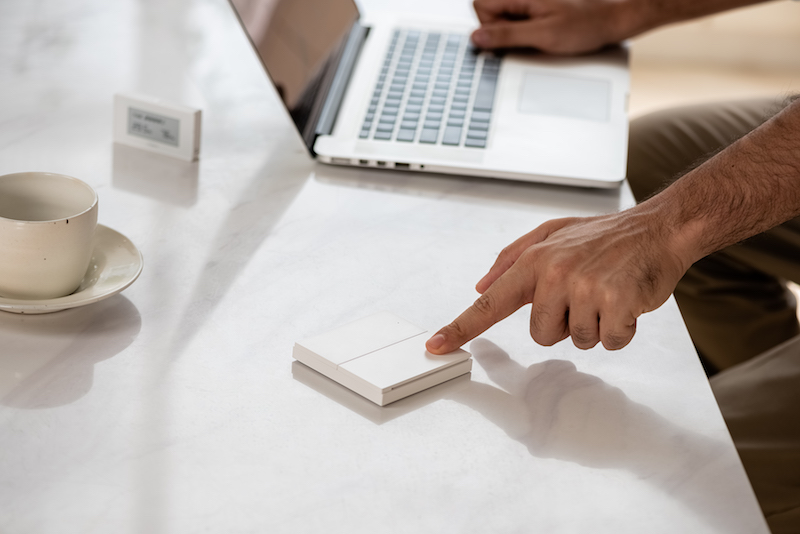
With those two things in mind, what I found while working with Aqara smart home devices connected to Apple HomeKit through Matter was that:
- The system was very reliable. I didn’t find any situations where commands from the Apple Home app to trigger an action on an Aqara device or status updates from Aqara sensors were lost.
- Speed was adequate. Commands, for example, to turn an Aqara Smart Switch on/off using the Apple Home app and the Matter protocol executed in less than one second. Status updates from Aqara sensors took only a few seconds before their status was updated in the Apple Home app.
- Once the Aqara Hub was connected to the Apple HomeKit ecosystem through Matter, new Aqara devices added to the Aqara Hub automatically showed up in the Apple Home app without any additional work.
- Aqara’s Matter support currently is limited to allowing devices manufactured by Aqara to be used in other Matter-compatible smart home ecosystems (Apple HomeKit, Google Home, etc.). Matter-compatible devices that are manufactured by other companies cannot be used within the Aqara smart home ecosystem and won’t show up within the Aqara app where they could be, for example, included in automation rules. However, Aqara has announced the plan to release its next-gen smart home hub, the Hub M3, and the plan to open the Aqara Home app to support third-party Matter devices.
Hub M3 will support multiple protocols (including Zigbee and Thread), and it is designed to not only expose Aqara Zigbee devices to Matter like the M2 but also serve as a Thread Border Router and a Matter Controller and Commissioner. This means that the M3 will be able to connect and manage third-party Matter devices. The M3 hub and the new Matter-enabled Aqara Home app are not here today, but when both becomes available in the near future, you will be able to control third-party Matter devices in Aqara Home and use them in automations with Aqara Home app.
SwitchBot and Matter
SwitchBot, which was founded in 2016, is focused on providing products that transform the things you already own into smart versions of themselves. This includes almost anything that can be controlled by pressing a button, blinds, shades, and more.
Currently, only the SwitchBot Blind Tilt and SwitchBot Curtain support the Matter protocol and, when coupled with the SwitchBot Hub 2, are made available for control by other Matter compatible smart home controllers.
Most smart home hubs are small boxes that are designed to be placed in an out of the way location, hidden from sight. The SwitchBot Hub 2 breaks that mold. It is designed to be placed on a tabletop or mounted on a wall. The SwitchBot Hub 2 has:
- A temperature and humidity display. The sensors are built into the hub’s power cable so they won’t be affected by heat from components in the hub
- Two smart buttons. Scenes defined in the SwitchBot app can be triggered by pressing a button
- A six LED IR blaster for controlling devices in the room where the hub is located that normally controlled through an IR remote control. Six LEDs are used to assure there is enough power to reach devices throughout the room
- Compatibility with the Matter protocol
Installation of the SwitchBot Hub 2 is very simple. With the SwitchBot app installed on your smart phone you simply press the “+” button in the upper right-hand corner of the app, select the Hub 2 from the list of devices, press the 2 on screen buttons for 2 seconds, enter your WiFi password, provide a name for the hub along with the room where the Hub 2 is located, and you are done. Adding other SwitchBot devices is equally easy.
Next, to link the Hub 2 to my Apple HomeKit ecosystem using the Matter protocol I started by selecting the Hub2 in the SwitchBot app and pressing the gear icon to display the Hub 2 settings menu. From the settings menu I selected “Matter Configuration (Beta). First, this required me to update to a new version of firmware for the Hub 2. Once that was completed, I selected “Matter Configuration” and was instructed to put the Hub 2 into pairing mode by pressing and holding the two buttons on the Hub 2 for 15 seconds. Next, using the Apple Home app, I selected to add an accessory and scanned the QR Code displayed in the SwitchBot app. The Hub 2 was then included in my Apple Home app with the built-in temperature and humidity sensors.
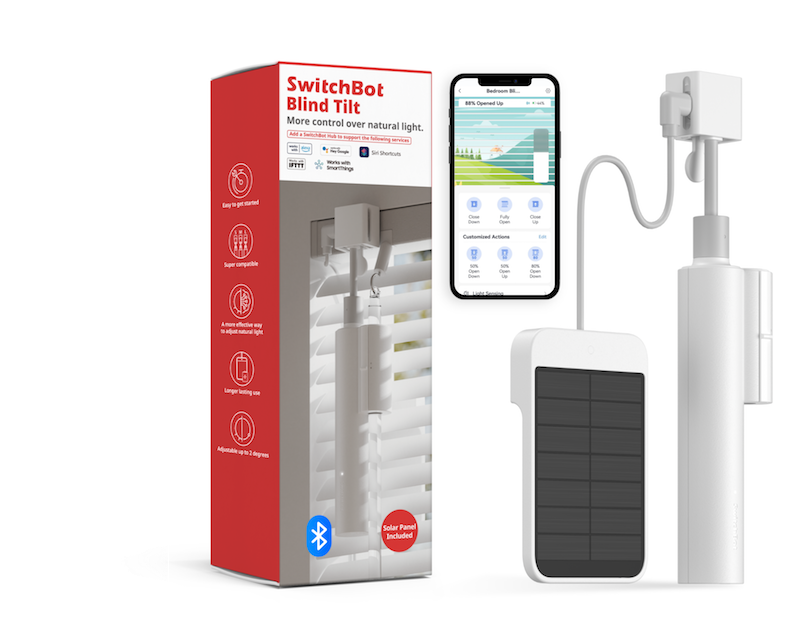
As part of my testing of SwitchBot’s Matter protocol support, I also had the opportunity to test a SwitchBot Blind Tilt for the first time.
The Blind Tilt itself is very easy to install. Its operating mechanism attaches to the header of the blind and clamps around the blind’s existing wand. In fact, even with the Blind Tilt installed, the existing wand can still be used to open/close the blinds if that happens to be more convenient then, for example, using the SwitchBot app.
There are easy to follow instructions for installing the Blind Tilt and the SwitchBot app will even display an instructional video. Once the Blind-Tilt is physically installed there is a very simple procedure to calibrate the blind tilt to your blinds so it knows the proper positions for opening and closing the blinds.
Under normal operation the Blind Tilt’s battery will last for up to 10 months on a single charge. In addition, the Blind Tilt comes with an optional solar panel that can be mounted in the window behind the blind. With the optional solar panel installed it will keep the Blind Tilt charged for an almost indefinite period of time. The solar panel also includes a light sensor that can be used in the automation of the opening/closing of the blinds.
Finally, the Blind Tilt is reasonably quiet when it is operating.
Adding a Blind-Tilt to my Apple HomeKit ecosystem was easily accomplished by selecting “Add Secondary Device” from the Hub 2’s Matter Configuration page in the SwitchBot app. The Blind-Tilt then showed up in the Apple Home app.
Overall, the operation of the Blind Tilt in the Apple Home app worked quite well, though there were some minor delays, at times, in operation. Since the Hub 2’s support for the Matter protocol is still a “beta” product release, I expect that this will be better optimized in the near future.
Other Manufacturers
Belkin/Wemo is going against the trend and after initially endorsing the Matter protocol has decided not to include it in its Wemo product line of smart home products. According to an article in The Verge, “In an email exchange, Jen Wei, vice president of global communications and corporate development at Belkin, confirmed that, while the company remains convinced that “Matter will have a significantly positive impact on the smart home industry,” it has decided to “take a big step back, regroup, and rethink’’ its approach to the smart home.
Wei went on to write that Wemo will bring new Matter products to market when it can find a way to differentiate them.” This highlights the challenge that smart home product companies are going to have in differentiating their products from the competition when the Matter protocol dictates that only a specific set of the features built into a product will be available through integration.
Eve is a German smart home device manufacturer that was established in 1999 and built its reputation building smart home devices for Apple’s HomeKit ecosystem. Eve was one of the first companies to release a product that included Matter protocol support and plans on adding Matter support to additional products via a firmware update on April 17.
Home Assistant is an open-source home automation platform that allows you to automate and control various smart devices in your home. It runs on a variety of hardware, including Raspberry Pi, and can connect to hundreds of different devices and services.
Home Assistant is highly customizable and can be extended using custom components, integrations, and plugins. It’s also community-driven, with a large and active community of developers and users who contribute to its development and provide support to others.
Home Assistant has incorporated the Matter protocol, but it only supports control of Matter devices. It is not a bridge itself and cannot turn devices within Home Assistant into Matter-compatible devices.
Hubitat is a home automation platform that allows users to control and automate various smart devices in their homes, such as lights, thermostats, locks, and sensors. It is designed to work locally, meaning that all automation and control happens within the user’s home network, without relying on cloud services. This allows for faster response times, greater privacy, and better security. Hubitat supports a wide range of smart devices, including those using the Zigbee, Z-Wave, and Wi-Fi protocols. It can be controlled through a web interface or mobile app.
Hubitat has announced that they are working on Matter protocol support. However, they have not been willing to share any details on the capabilities they are including in that support or any information on when Matter support will be available.
Ikea is an 80-year-old Swedish corporation that designs and sells ready-to-assemble furniture, kitchen appliances, home accessories, and other products for the home. In spite of being in what some would consider a “stodgy” industry, Ikea has been a leader in developing their own line of, easy-to-use smart home products. In the fall of 2023 Ikea released the DIRIGERA, Matter-compatible smart home hub. The Hub includes radios for Wi-Fi, Zigbee, and Thread. Full Matter support will be enabled in a software update.
Nanoleaf is a consumer electronics company that was founded in 2012 and specializes in LED lighting. They have released their Essential line of Matter-compatible smart bulbs and lightstrips and are working to include Matter compatibility into their entire product line.
Philips Hue line of smart bulbs was the first smart bulb of its kind on the market in 2012. The brand had previously committed to update its bridge to support the matter protocol by the end of the first quarter of 2023, but it has now been reported by The Verge that they are delaying that rollout.
Shelly smart home products are manufactured by Allterco Robotics, one of seven companies that make up the Bulgarian holding company, has 20 years of experience in mobile, value-added products and services. The company is expanding beyond the telecommunications industry and is now focusing on the development and distribution of IoT products and solutions.
Allterco Robotics introduced its Shelly line of smart home IoT products in 2018. These products are sold in 120 countries around the world, and the company opened an office in the U.S in 2020.
At this year’s CES conference, Shelly announced that all of Shelly’s devices in their Plus and Pro product lines will support the Matter protocol through an optional firmware update. This update should be available around the end of the second quarter of 2023.
YoLink is a smart home product line offered by YoSmart, an Irvine, CA, company founded in 2014 by John Xu with the goal of “making home life simple for everyone.” The products utilize LoRa communications technology which offers long-range communications of up to a quarter mile and an expected battery life in their battery-operated devices of between two and 10 years.
YoLink will be adding Matter support through a software update to their existing hubs and that update is expected to be released in the second quarter of 2023. With the software update installed, YoLink devices will be exposed to other Matter compatible controllers. In addition, other Matter-compatible devices will be able to be controlled through the YoLink Hub and participate in automations rules on the hub.
This is by no means a complete list of companies that have released, or plan on releasing, products that support the Matter protocol. However, it provides an overview of the state of the industry at this time.
Conclusions
Many people have been skeptical that Apple, Google, Amazon, and Samsung SmartThings could successfully work together and make the Matter protocol a reality. In spite of the competitive nature of these companies, the Matter protocol, while still in its infancy, is available today, working reasonably well, with support from more companies is coming in the near future.
It is also important to realize that Matter is still evolving. Today, Matter only supports a few device categories including lighting, plugs/outlets, window coverings, thermostats, sensors, TVs, and streaming video players.
The plan is for the Matter specification to be expanded over time to include more device categories. For example, in the spring of 2023 a new release of the specification is scheduled that includes support for, among other things, robotic vacuum cleaners.
So, while the Matter protocol will allow smart device manufacturers to reduce their expenses through only having to support a single communications protocol for integration, as Jen Wei at Belkin/Wemo has realized, differentiating your company’s products versus your competitors is going to become more challenging for companies.



